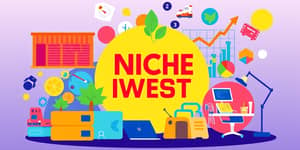The modern business landscape is both an arena of relentless competition and a canvas for those bold enough to shape their own destinies. With over 33 million small businesses in the U.S. alone, surviving—let alone thriving—requires more than conventional tactics. Companies must identify, cultivate, and protect their strategic advantage to achieve sustained success.
Understanding Strategic and Competitive Advantage
At its essence, strategic advantage refers to the unique position, capabilities, or assets that enable a firm to outperform rivals over the long haul. It is created by leveraging unique strengths and catalysts to deliver superior outcomes, even in turbulent markets. Competitive advantage, while closely related, zeroes in on the specific capabilities that attract customers and boost profitability.
These concepts are not static. They evolve with technology shifts, consumer behaviors, and global trends. Mastery of both strategic and competitive advantage demands continuous learning and agility.
Core Sources of Strategic Advantage
Strategic advantage can stem from a wide array of internal and external factors. Organizations that systematically build on multiple sources are better equipped to weather disruption.
- Talent at all organizational levels
- Stakeholder relationships with investors, governments, and partners
- Home country advantages like tax incentives and infrastructure
- Lean and effective operational processes
- Distinct capabilities, such as proprietary R&D or design excellence
- Strong organizational culture that fosters innovation
- Brand recognition and enduring reputation
- Innovative business models, including two-sided platforms
- Product/service quality and premium positioning
- Unit cost discipline and cost efficiency
- Access to capital and funding networks
- Economies of scale in production or distribution
- Technological superiority through continuous R&D
- Niche focus and precise market segmentation
- Geographic location benefits and local market insights
While no single source guarantees victory, the intersection of several creates a robust defense against competitive threats.
Analytical Frameworks for Strategic Insight
Understanding where to compete and how to win begins with rigorous analysis. Three frameworks stand out for their clarity and practicality:
By mapping competitive pressures and aligning internal strengths, leaders can chart clear strategic pathways and allocate resources for maximum impact.
Proactive Strategies to Outsmart Competition
To maintain momentum, companies must adopt strategies that outpace rivals rather than merely react to them. Key approaches include:
- Know Your Real Competitors: Conduct deep analysis of both direct and indirect players to identify vulnerabilities and white spaces.
- Differentiation: Establish a compelling USP—through quality, price, ethics, origin, or technology—and communicate it at every touchpoint.
- Innovate Continuously: Commit resources to R&D, pilot emerging technologies like AI and blockchain, and iterate rapidly.
- Customer Advocacy: Build trust and loyalty programs that turn customers into vocal advocates and amplify authentic word-of-mouth.
- Leverage Trends: Seize early-mover advantages in areas such as sustainability, social commerce, and digital experiences.
- Operational Excellence: Streamline processes, reduce waste, and exploit economies of scale for cost leadership.
- Focus and Niche Targeting: Dominate specific segments or geographies with customized offerings.
- Brand Building: Cultivate reputation through consistent, values-driven engagement and quality delivery.
Each strategy reinforces the others. For example, innovation fuels differentiation, while customer advocacy enhances brand building.
Harnessing Data, Technology, and Emerging Trends
Data is the lifeblood of strategic decision making. Companies that harness analytics to forecast demand, personalize experiences, and optimize operations gain significant edges. Recent studies show that organizations leveraging AI tools report a 25% boost in efficiency and a 20% uplift in customer satisfaction.
The rapid rise of social commerce post-pandemic underscores the importance of early adoption. Global sales through social platforms surged by over 30%, rewarding brands that integrated seamless purchasing experiences directly into social feeds.
Likewise, commitment to sustainable practices—transparent sourcing, carbon footprint reduction, and circular design—has become a powerful differentiator, with 70% of consumers willing to pay more for eco-friendly products.
Case Studies: Real-World Triumphs
Examining successful firms reveals how theory translates into practice:
Cost Leadership in Electronics
A multinational electronics manufacturer reengineered its supply chain with robotics and data-driven forecasting, cutting production costs by 18%. This allowed the company to lower prices and capture 5% additional market share.
Product Differentiation in Skincare
A specialized skincare brand invested in clinical trials for proprietary botanicals, achieving a 15% premium pricing and growing annual revenue by 40% despite intense competition.
AI-Powered Retail
An e-commerce platform integrated machine learning recommendation engines, increasing average order value by 12% and reducing churn by 8% within six months.
Brand Advocacy in Hospitality
A boutique hotel chain leveraged guest storytelling on social media, driving a 25% rise in direct bookings and elevating Net Promoter Score (NPS) by 30 points.
Recommendations for Sustained Market Leadership
Sustaining strategic advantage demands vigilance and adaptability. Leaders should:
- Embed a culture of experimentation and continuous learning.
- Invest in capabilities that are difficult for competitors to replicate, such as proprietary tech and unique partnerships.
- Establish cross-functional teams to accelerate innovation cycles and break down silos.
- Monitor external developments—regulatory shifts, technological breakthroughs—and adjust strategy in near real time.
- Maintain close feedback loops with customers to iterate offerings and anticipate evolving needs.
Conclusion: Staying Ahead in a Dynamic Market
In a landscape defined by rapid change and fierce competition, no advantage is permanent. Organizations that commit to ongoing reassessment as market forces evolve, align their unique strengths with emerging trends, and cultivate deep customer relationships will not only outsmart their competition but also chart new trajectories for growth and impact. The path to market leadership is a continuous journey of insight, innovation, and execution—one that rewards those who dare to think strategically and act decisively.
References
- https://simplicable.com/new/strategic-advantage
- https://www.neverstopmarketing.net/8-business-strategies-to-outsmart-your-competition/
- https://www.indeed.com/career-advice/career-development/competitive-advantage-examples
- https://www.ecisolutions.com/blog/7-strategies-for-winning-against-increasing-market-competition/
- https://brandwell.ai/blog/competitive-advantage-examples/
- https://www.octopusintelligence.com/how-to-outsmart-the-competition-winning-strategies-for-business-growth/
- https://www.geostrategy.org.uk/research/what-is-strategic-advantage/
- https://www.ibisworld.com/blog/competitive-forces/99/1127/










